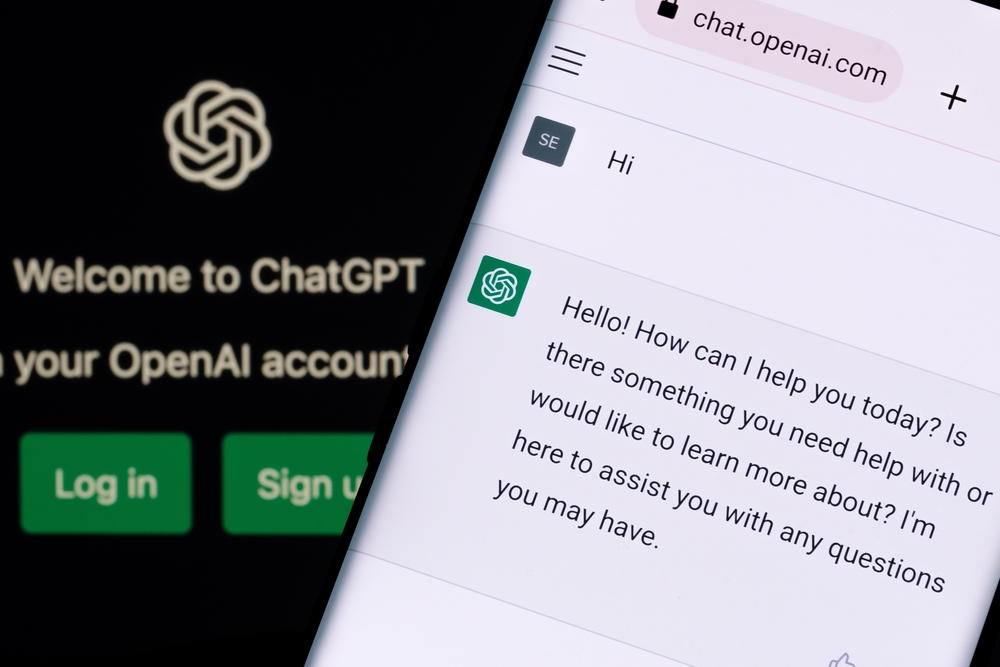Right now feels like someone pulled the plug on half the internet’s brain. If you’re currently staring at error messages where your helpful AI responses usually appear, you’re definitely not alone. Thousands of people across the globe are discovering what life looks like when your digital assistant decides to take an unscheduled coffee break.
Today’s ChatGPT blackout is reminding everyone just how quietly these AI tools have woven themselves into daily routines. One minute you’re asking for help with work emails, recipe suggestions, or that tricky coding problem, and the next minute you’re met with the digital equivalent of a busy signal.
What’s happening right now started as isolated complaints but quickly snowballed into a full-scale realization that millions of people have developed habits they didn’t even know they had. This outage isn’t just a technical hiccup. It’s a mirror reflecting how seamlessly artificial intelligence has become part of modern problem-solving.
The error messages that are breaking the internet’s heart
Nothing quite captures modern frustration like staring at an error message when you desperately need help. Today’s ChatGPT users are encountering a variety of digital rejection letters, from the polite “network error occurred” notifications to the more existentially troubling “something seems to have gone wrong” messages.
These aren’t just technical glitches. They’re conversation stoppers that are leaving people mid-thought, mid-project, and mid-crisis. The timing feels particularly cruel for anyone who has grown accustomed to having an AI thinking partner available around the clock.
The error messages themselves told a story of a service stretched beyond its limits. Some users saw network connection warnings, others faced complete silence, and a few encountered responses so vague they might as well have said “computer says no” and called it a day.
What made these messages especially frustrating was their lack of helpful information. Unlike other service outages that might offer estimated repair times or specific explanations, the AI assistant simply vanished without much explanation, leaving users to wonder if the problem was their internet, their device, or something much bigger.
Social media becomes the new customer service desk
When digital tools fail, people don’t just wait quietly anymore. They immediately turn to other digital tools to figure out what’s happening. Today’s outage is triggering a wave of social media posts that read like group therapy sessions for the digitally dependent.
The posts revealed something interesting about how people relate to AI assistance. Comments ranged from joking references to “work buddies” being down to genuine concern about productivity grinding to a halt. Some users admitted they hadn’t realized how frequently they consulted their AI assistant until it disappeared.
The collective troubleshooting happening across social platforms showed how outages create instant communities. People shared screenshots of error messages, compared symptoms, and offered theories about what might be causing the disruption. It was like a digital version of neighbors gathering during a power outage, except everyone was holding glowing rectangles.
These social media conversations also highlighted the global nature of the problem. Users from different continents were comparing notes, creating a real-time map of the outage’s reach that often proved more informative than official status updates.
The mystery behind digital disappearing acts
Technical outages remain surprisingly mysterious even in our hyper-connected world. When a service like ChatGPT goes down, the reasons can range from mundane software updates gone wrong to more dramatic scenarios involving cyberattacks or infrastructure failures.
The complexity of modern AI systems means that problems can cascade in unexpected ways. A small glitch in one part of the system can ripple outward, affecting users thousands of miles away from the actual problem. It’s like how a butterfly flapping its wings can theoretically cause a hurricane, except with servers and code instead of weather patterns.
Tuesday’s outage joined a growing list of digital service interruptions that remind everyone how fragile our connected world can be. These systems handle millions of requests simultaneously, operating at scales that would have seemed impossible just a few years ago, but that same scale makes them vulnerable to spectacular failures.
The investigation process for these outages often takes longer than users expect. Companies have to balance transparency with the technical complexity of explaining what went wrong to people who just want their service back online.
When backup plans become extinct
Perhaps the most telling aspect of Tuesday’s outage was how it revealed the absence of backup plans. Many people realized they had unconsciously reorganized their workflows around AI assistance without maintaining alternative approaches for getting things done.
This digital dependency isn’t necessarily problematic, but it does create vulnerability when systems fail. The same efficiency gains that make AI tools so appealing can become bottlenecks when those tools disappear unexpectedly.
Some users discovered they had developed habits of immediately reaching for AI help instead of thinking through problems independently first. Others realized they had been using AI assistance for tasks they could absolutely handle themselves but had chosen not to out of convenience.
The outage served as an unintentional experiment in digital resilience. People had to remember how to research information using traditional search engines, solve problems through trial and error, or actually call customer service numbers instead of asking an AI to handle the interaction.
The recovery reveals our new normal
As services gradually returned to normal, the collective sigh of relief was almost audible across the internet. People welcomed back their AI assistants like returning friends, immediately testing functionality with familiar questions and tasks.
The restoration process highlighted how quickly these tools have become integrated into daily routines. Within hours of service returning, usage patterns bounced back to normal levels, suggesting that Tuesday’s forced break didn’t inspire many people to permanently reduce their AI dependency.
Some users reported feeling more aware of their reliance on AI assistance after experiencing its absence. This awareness didn’t necessarily translate into behavior changes, but it did create a moment of reflection about how seamlessly digital tools have become part of thinking processes.
Preparing for the next digital drought
Tuesday’s outage offered valuable lessons about building resilience into AI-dependent workflows. The most practical takeaway isn’t to avoid using these tools, but rather to maintain awareness of when you’re relying on them and have alternatives ready when they inevitably fail again.
Smart users started thinking about backup approaches for their most AI-dependent tasks. This might mean keeping traditional research methods sharp, maintaining human contacts for questions that AI usually handles, or simply accepting that some projects might need to pause when digital assistants take unexpected breaks.
The outage also reinforced the importance of not putting all your digital eggs in one AI basket. Diversifying the tools you use and the methods you rely on creates cushions for when individual services experience problems.
Most importantly, Tuesday reminded everyone that behind the seamless AI interactions are complex systems operated by humans, running on servers that can fail, maintained by companies that make mistakes. Understanding this reality doesn’t diminish the value of AI assistance, but it does help set realistic expectations about reliability in our increasingly digital world.
















